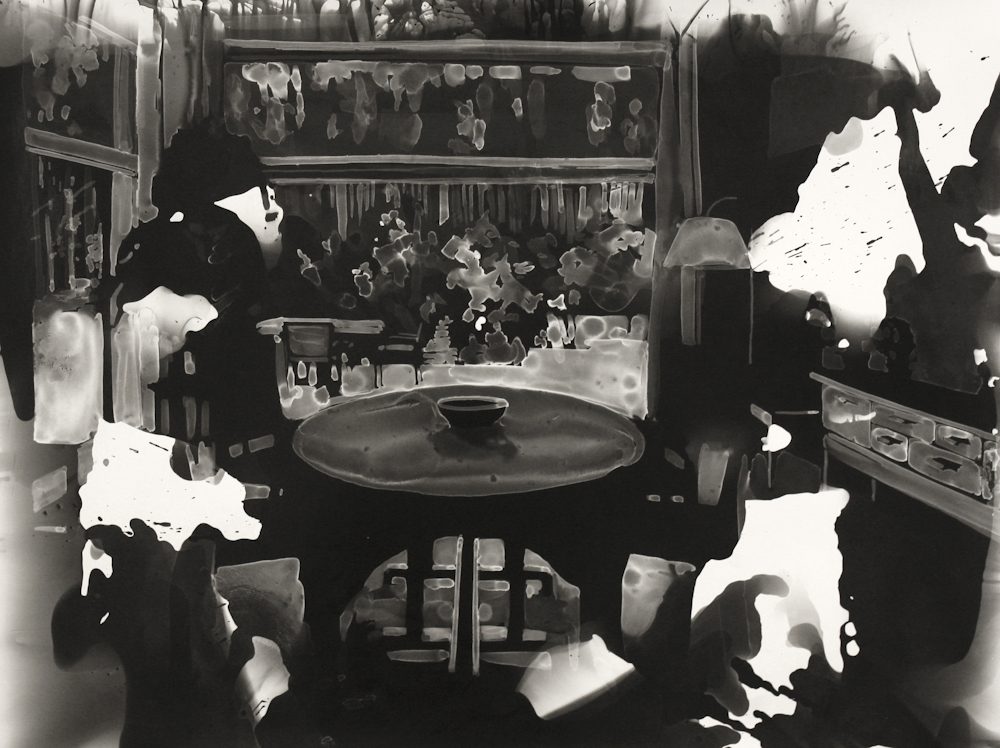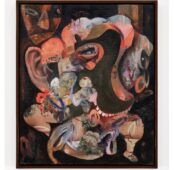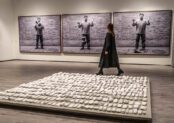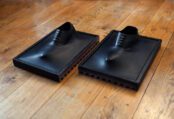The choice of material the artist makes draws upon the history of humanity’s manipulation of the physical world. Shaping our perception of human needs and desires, we erect buildings both as shelter and as testament to our mastery of the world. Such statements are less about keeping the rain from our heads and more about making pronouncements to our peers.
Culture is unavoidably a statement of power, whether it’s affirmingly collective or fiercely individual, we behave, craft and consume to survive against threats from without and within. It might even be said that our appreciation of beauty is a statement against what is frequently an unfair and inhumane world. Instead, at our best, we follow a guttering flame, a mirage of pale hope we toil tirelessly to manifest.
The sculptor Jon Kipps fashions materials in a way that reflects our contemporary world: industrial, functional, and increasingly anti-human – or rather anti-other. The idea of a hostile architecture is not new; moats, spiked trenches and gibbets spring to mind. But so too do the buildings in the purist style Le Corbusier designed in the 1920s. Today we have curved bus-stop benches, spiked street areas in front of corporate offices, anti-climb walls and a number of other examples of street furniture devised to reduce the effect of constant human traffic. Kipps’ work, with its nod to the practical aspects of modern architecture, has a functional appeal. The crisp angles suggest we’re looking at something focussed by an expected use, the whimsical creative elements framed within strong workmanlike structures, which, while nudging us towards the lighter aspects of our character, also heighten life’s underlying hard truths. Indeed, art thrives on such ambiguities. Kipps says about his works:
“They’re mostly sculpture in medium, but I have often described them as hybrid objects. This is because the work evolves from a combination of different found materials and source images – content that is often disparate or unrelated in subject matter that I splice together into different sculptural forms.

With modernism the idea of form following function really resonates with my work as a lot of the sculptures hint at an idea of functionality. They look like they have been designed for a specific purpose, for example, control panels, alarm systems or holders for something, or signs etc, however the exact function is ambiguous. I also like to think they feel like artefacts of some sort. Simon Faithfull wrote a really nice quote about my work last year in relation to this.
‘I find them something like ‘runes’ built from the offcasts of late capitalism. Something like a Star Trek episode where Kirk and Spock beam down to a new planet to find the locals worshipping a Ford Mondeo hub-cap – holy relics (or in your case, materials) from a collapsed society.’

I think there is something about the way I approach materiality that links in here too – making abstracted forms that feel quite assertive and using materials that seem very hard and angular like steel or concrete, even if they are actually dyed MDF or mycelium.
In terms of the politics of the material world, that is definitely a consideration in the work, and partly why I was drawn to start working with mycelium. Whilst some companies are already making their products with mycelium or using it to package their products instead of polystyrene, this will become more and more commonplace. In the future, mushroom-related materials will be prevalent in our daily lives, replacing boxes and polystyrene, and I find that very exciting.”
Sculpture, like installation, is a three-dimensional art, one which includes the viewer and changes with the different ways light falls on the artwork, and one which the viewer can walk or wheel around getting an intimate understanding of how the work both exists in and contains space or scale. Kipps’s work establishes a specific resonance with the ordinary world. Like readymades or arte povera, his work… (read the full article in Trebuchet 15)
Read more in
Trebuchet 15: Installation
Featuring:
Installations as theatre
Giuseppe Penone
Michael Landy
Annette Messager
Karolina Halatek
Sounds Art as Installation
Jean Boghossian
Jon Kipps
Chantal Meza

Writer and academic Cartagena works in the arts polishing bios and gallery notes in the pursuit of clarity. He also lectures, though with enough opacity to impart wonder.






















